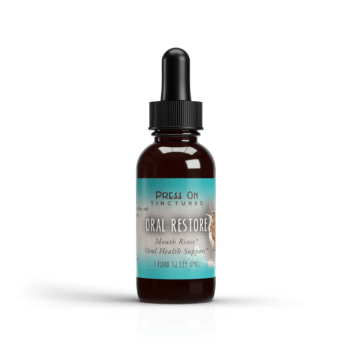Vegetable Glycerin in Herbal Medicine
In the world of herbal medicine, vegetable glycerin has carved out a niche for itself as a versatile and valuable ingredient. Known for its ability to extract and preserve the medicinal properties of herbs, it is often used in the creation of tinctures and other herbal remedies. But what exactly is vegetable glycerin, and how does it fit into herbal medicine? In this article, we will explore the uses of vegetable glycerin, its benefits, and how it is integrated into the practice of herbal medicine.
What is Vegetable Glycerin?
Vegetable glycerin, also known as glycerol, is a clear, odorless liquid derived from plant oils, predominantly coconut, soy, or palm oil. It is a type of sugar alcohol that is widely used in the food industry as a sweetener and moisture-retaining agent due to its slightly sweet taste and hygroscopic nature.
How is Vegetable Glycerin Made?
Vegetable glycerin is produced through a process called hydrolysis, where plant oils are subjected to pressure and temperature, breaking them down into fatty acids and glycerol. The glycerol is then purified to create the vegetable glycerin we use today.
Uses of Vegetable Glycerin in Herbal Medicine
Vegetable glycerin is celebrated in herbal medicine for its ability to extract and preserve the active compounds found in herbs. Here are some of the primary uses:
Glycerin for Tinctures
One of the most common applications of vegetable glycerin in herbal medicine is in the creation of tinctures. Tinctures are liquid extracts made from herbs that can be used internally or externally to support health and wellness.
Why Use Glycerin for Tinctures?
- Alcohol-Free Alternative: Traditional tinctures are made using alcohol to extract the beneficial compounds from herbs. However, not everyone can or wants to consume alcohol. Glycerin provides an alcohol-free alternative that is safe for children, individuals with alcohol sensitivities, and those who prefer to avoid alcohol for personal reasons.
- Sweet Taste: Unlike alcohol-based tinctures, glycerin tinctures have a naturally sweet taste, making them more palatable, especially for children.
- Preservation and Shelf Life: Glycerin acts as a preservative, extending the shelf life of herbal tinctures.
Vegetable Glycerin as a Solvent
In addition to its use in tinctures, vegetable glycerin is also employed as a solvent in herbal medicine. Its solvent properties allow it to effectively extract water-soluble compounds from herbs, making it a valuable tool for herbalists who wish to capture the full spectrum of an herb’s medicinal properties.
Benefits of Using Vegetable Glycerin
The use of vegetable glycerin in herbal medicine offers several benefits:
Safe and Non-Toxic
Vegetable glycerin is generally recognized as safe (GRAS) by the FDA and is non-toxic when used in recommended amounts. This makes it a safe choice for herbal preparations intended for all age groups.
Moisturizing Properties
In addition to its medicinal uses, vegetable glycerin is also known for its moisturizing properties. It attracts and retains moisture, making it a popular ingredient in skincare products. Herbalists often incorporate glycerin into topical remedies to enhance hydration and soothe the skin.
Versatile Ingredient
Vegetable glycerin’s versatility extends beyond herbal medicine. It can be used in a variety of applications, from food and beverages to personal care products, making it a valuable addition to any herbalist’s toolkit.
How to Make a Glycerin-Based Herbal Tincture
Creating a glycerin-based tincture at home is a simple process that requires only a few ingredients and tools. Here’s a step-by-step guide:
Ingredients and Tools
- Dried or fresh herbs of your choice
- Vegetable glycerin
- Distilled water (optional)
- Glass jar with a tight-fitting lid
- Cheesecloth or fine mesh strainer
- Dark glass bottles for storage
Instructions
- Prepare the Herbs: Chop the herbs into small pieces to increase the surface area for extraction.
- Mix Glycerin and Water: If desired, mix equal parts of vegetable glycerin and distilled water. The water helps to extract certain compounds that glycerin alone may not.
- Combine Herbs and Glycerin Mixture: Place the herbs in a glass jar and pour the glycerin mixture over them, ensuring the herbs are completely submerged. Seal the jar tightly.
- Infuse the Herbs: Store the jar in a cool, dark place for 4-6 weeks, shaking it gently every few days to mix the contents.
- Strain and Bottle: After the infusion period, strain the liquid through cheesecloth or a fine mesh strainer to remove the plant material. Transfer the finished tincture to dark glass bottles for storage.
Considerations and Precautions
While vegetable glycerin is generally safe, there are a few considerations to keep in mind:
- Quality: Always use food-grade vegetable glycerin to ensure safety and efficacy.
- Storage: Store glycerin-based tinctures in a cool, dark place to maintain their potency.
- Dosage: Follow recommended dosages for herbal tinctures and consult with a healthcare professional if you have any concerns or are taking other medications.
Conclusion
Vegetable glycerin is a valuable and versatile ingredient in herbal medicine, offering a safe and effective way to extract and preserve the beneficial compounds of herbs. Whether used in tinctures or as a solvent, its moisturizing properties and pleasant taste make it a popular choice for herbalists and home remedy enthusiasts alike. By understanding its uses and benefits, you can confidently incorporate vegetable glycerin into your herbal practice and enjoy the natural healing power of plants.

